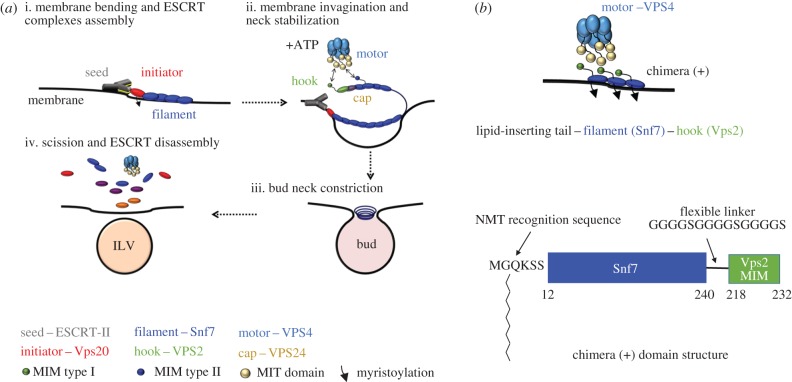Figure 1.
(a) The core membrane scission machinery ESCRT-III generates ILVs. (i) Membrane bending by ESCRT-II and seeding of ESCRT-III assembly. (ii) The subunit Vps20 initiates Snf7 polymerization into a spiral filament (rectangle shaded blue) and induces membrane budding. Vps24 stops filament elongation and the spiral filament drives membrane buckling into an ILV. (iii) Neck constriction of the budded vesicle occurs via Vps4-mediated ESCRT-III polymer shortening. (iv) Full ESCRT-III disassembly in preparation for a second round of ILV formation. (b) The myristoylated Snf7–Vps2 chimera is labelled as ‘chimera (+)’ in all figures for clarity (‘chimera (−)’ indicates the absence of myristoylation). Chimera (+) should anchor the membrane via an N-terminal myristoyl group, assemble on the membranes via the full-length Snf7 domain and have the ability to bind the Vps4 enzyme. (c) The chimera protein is designed by fusion of the Vps4 binding region of Vps2 (MIM type I) to the C-terminus of the filament subunit Snf7, via a flexible linker. An N-myristoyl transferase recognition sequence replaces the first 11 residues of the Snf7 N-terminus.

